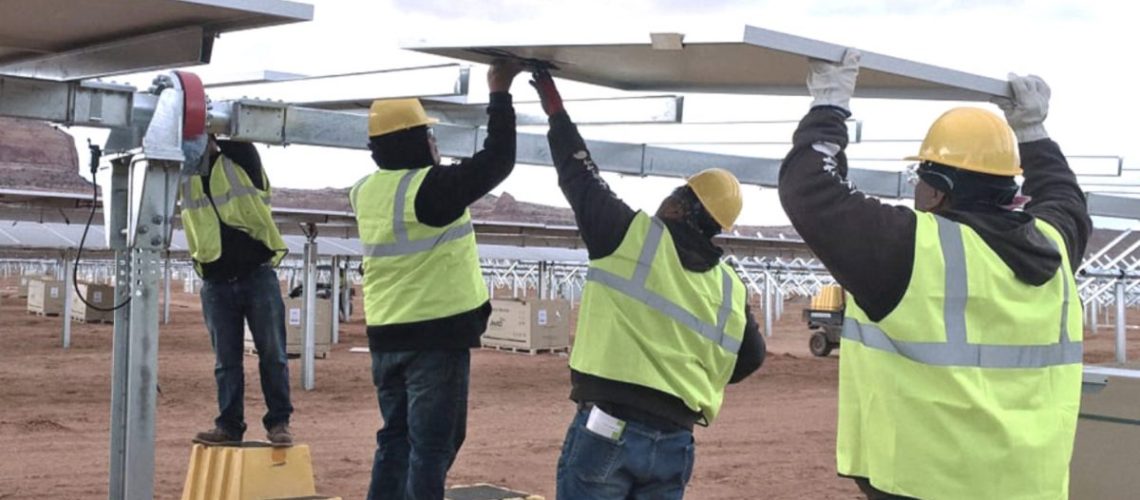Renewable energy, primarily solar, wind and energy storage, is expected to become the dominant source of electric generation by 2030. The low-case and high-case projections place clean energy’s share of electricity generation between 71% to 90%.
But this energy transition will not happen automatically, and political actions must be taken to ensure that the move towards renewable energy happens rapidly and equitably. Senator Ed Markey (D-MA) shared his vision of a progressive energy transition in a presentation delivered at the Roosevelt Institute in New York.
The Senator’s plan aims to ensure that “any proposal centers justice and does not perpetuate more harms” to the “communities who have suffered and sacrificed the most for generations” as a result of environmental injustices.
Pass funding
Step one has been completed in Markey’s plan, as historic levels of funding have been passed through the Inflation Reduction Act (IRA). These funds, among many other things, will help towards the implementation of the National Environmental Policy Act (NEPA), often referred to as the “Magna Carta of environmental law.”
The Inflation Reduction Act included $60 billion in critical funding for environmental justice, including designating funds to NEPA implementation. These funds will allow agencies to thoroughly and effectively review proposed infrastructure projects, said Markey. He said that additional funding for state and Tribal permitting and historic preservation offices is needed as well.
Fix broken permits, interconnection, siting
Markey’s Connecting Hard-to-reach Areas with Renewably Generated Energy (CHARGE) Act would proactively plan and build a reliable and resilient energy grid across broad regions of the country, bridging the gap between the supply of renewable energy and the cities and towns that need access. The legislation would also implement a series of reforms through Federal Energy Regulatory Commission (FERC), requiring strong transmission planning reforms, establishing minimum levels of transfer capabilities between regions, supporting competition, and requiring effective oversight of transmission networks.
FERC currently has ongoing rulemakings to address the interconnection backlog, cost allocation, and regional planning.
“FERC can continue to do more to support grid-enhancing technologies that improve transmission without requiring more infrastructure to be built,” said Markey.
Congress should amend Federal Power Act Section 216 to designate FERC as the siting authority for transmission facilities with capacity ratings of 1 GW or greater and should direct FERC to allocate costs of transmission projects, said Markey.
Markey also notes that poor utility and wholesale market planning has led to a backlog of clean and distributed energy being trapped in interconnection queues.
“At the end of 2021, more than 1,400,000 MW of total generation and storage capacity was in the queue for connection to the grid—more than 90% of which was zero-carbon resources like solar, wind, and battery storage,” said Markey.
Markey pointed to his permit reform plan as a preferable path to the House Republican-backed H.R.1, a proposal that he said would “renege on commitments made to frontline environmental justice communities” and roll back “environmental protections for oil and gas projects, incentivizing dirty energy production on federal lands.”
Stakeholder engagement
The plan aims to support transparent and efficient deployment of clean energy by bringing frontline environmental justice communities to the table earlier in the process and establishing equity and justice requirements.
To achieve this, support for pre-development programs like the Local Infrastructure and Technical Assistance (LIFT) Act is recommended. The programs provide grants to communities to cover market assessments, community engagement, site acquisition, and permitting costs for projects ranging from rooftop solar to electrification.
He also supports legal frameworks and requirements for environmental justice and equity, like those in the Environmental Justice for All Act. The Act establishes environmental justice requirements, advisory bodies, and programs to address the disproportionate adverse health or environmental effects of federal laws or programs on communities of color, low-income communities, or tribal and indigenous communities.
Furthermore, an intervener funding program through the FERC’s Office of Public Participation to help members of the public cover expenses incurred in relation to their engagement in Commission proceedings. This program could ensure underrepresented communities are empowered to fully engage in FERC decisions.
The plan calls for development of tools to both speed project adoption while preventing communities from being cut out of the process. This includes creating a centralized database to track project timelines and approval processes and prioritizing permitting of clean energy and transit projects that are supported by environmental justice communities and reduce energy burden. It would also involve supporting an analogue to the Federal Permitting Improvement Steering Committee (FPISC) that would focus on helping under-resourced communities shepherd projects through the permitting process.
Prioritize environmental justice
More legislation could support completion of projects that are both of significant national importance and a priority for environmental justice communities.
“For instance, legislation could designate 25 zero-emission energy generation projects as projects of strategic national importance, of which at least 50% would be for clean energy projects that support environmental justice communities,” said Markey.
Environmental justice liaisons in federal agencies and funding for interveners could also ensure that communities are brought in at the front of the process, he concluded.
“We must make sure that households everywhere can get clean, affordable energy that protects their health and the health of the climate,” said Senator Markey.



